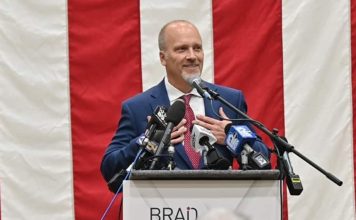Gov. Evers on Friday joined seven other Democratic governors in writing a letter to the Department of Health and Human Services asking for a share of the doses that are being held in reserve.
(The Center Square) – Wisconsin Gov. Tony Evers is asking for more coronavirus vaccine doses – even as half of the state’s allotment sits in refrigerators across the state.
Evers signed letter is raising some objections. As of Friday, the same day the governor signed the letter, the Wisconsin Department of Health Services reported that doctors in the state had distributed 123,402 of the state’s 266,675 allocated doses. Wisconsin is in-line to get 420,200 doses, but many of those have not yet been sent.
“The failure to distribute these doses to states who request them is unconscionable and unacceptable,” the governors’ letter stated.
“If Gov. Evers cannot figure out how to distribute the vaccine to those who need it, he should step aside and let someone who can lead this effort do it,” Steil said on Twitter.
Wisconsin Republican Congressman Bryan Steil said Gov. Evers has failed to quickly get the vaccine to frontline healthcare workers and people living in the state’s long-term living facilities.
“Gov. Evers said ‘It is going to take us a long time to get these vaccines in people’s arms.’ Really? Why can 38 other states plus [Washington] DC administer vaccines faster than Wisconsin?,” Steil asked in another tweet. “Wisconsin should be leading the nation! This is a matter of life or death for many. Do your job, governor.”
As of last week, Wisconsin trailed almost every Midwestern state in vaccine delivery.
The state’s vaccine distribution subcommittee could vote Tuesday to open Phase 1b of the vaccination program. That could allow vaccinations for more frontline workers, along with essential workers and people who deemed at-risk.
Wisconsin’s vaccine managers are now looking to expand the pool of people who can get the vaccine.
Some advocates say Wisconsin needs to fast track the vaccine into jails and prisons rather than simply into the state’s nursing homes.
Essential workers cover everyone from police officers and firefighters to grocery store clerks. The at-risk population covers everyone from seniors and people living in nursing homes to prisoners and inmates.
{facebook_url}
By Benjamin Yount | The Center Square
Go to Source
Reposted with permission











![WATCH: Elon Musk Town Hall Rally in Green Bay [FULL Video]](https://www.wisconsinrightnow.com/wp-content/uploads/2022/04/Elon_Musk_3018710552-356x220.jpg)



![The Wisconsin DOJ’s ‘Unlawful’ Lawman [WRN Voices] josh kaul](https://www.wisconsinrightnow.com/wp-content/uploads/2025/03/MixCollage-29-Mar-2025-08-48-PM-2468-356x220.jpg)







![Phil Gramm’s Letter to Wall Street Journal [Up Against the Wall]](https://www.wisconsinrightnow.com/wp-content/uploads/2025/03/gramm-356x220.png)










